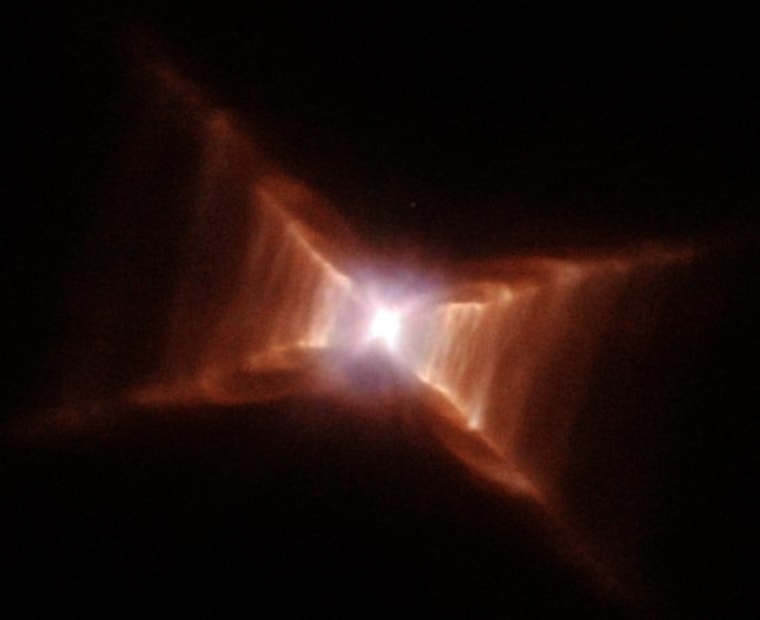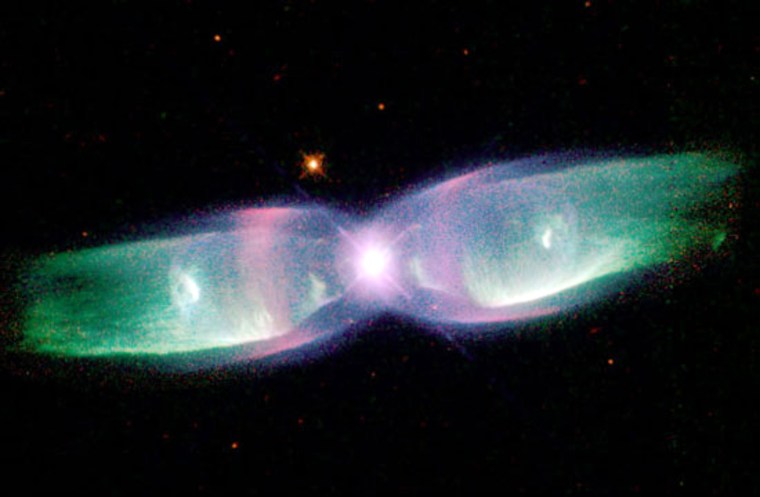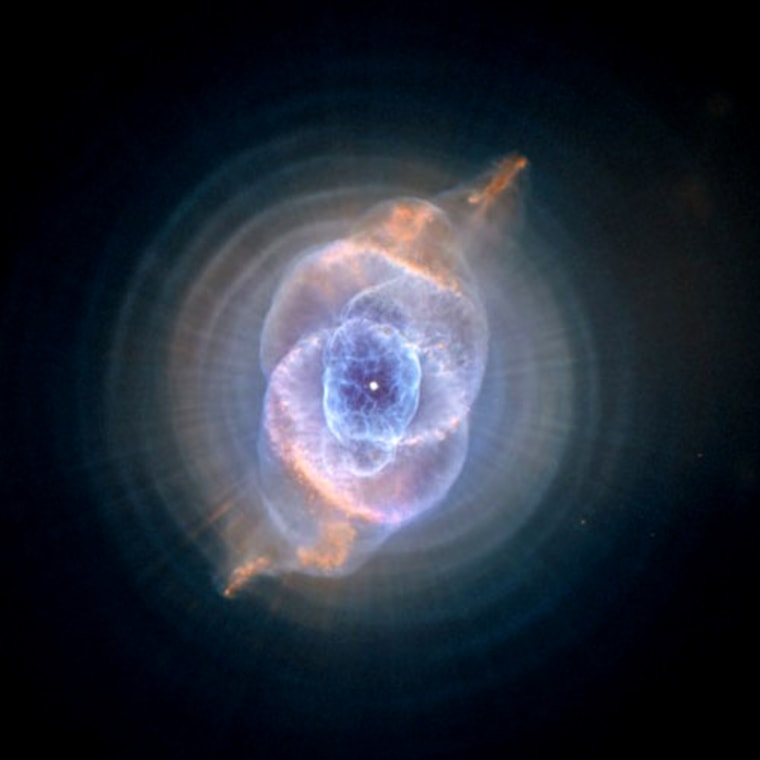The term "planetary nebula" has always been a misnomer, but these spectacular clouds of dust and gas may actually have something to do with planets after all, astronomers have found.
When astronomers discovered these celestial objects 300 years ago, they couldn't tell what they were and so named them for the resemblance they had to the planet Uranus as seen through early, relatively crude telescopes. But by the mid-19th century, it was realized that they were actually great clouds of dust emitted by dying stars.
Now, researchers at the University of Rochester have found that low-mass stars or possibly even giant gas planets orbiting these aged stars could be pivotal in creating some of the nebulae's unusual shapes.
"Few researchers have explored how something as small as a very low-mass star, a brown dwarf or even a massive planet can produce several flavors of nebulae and even change the chemical composition of the dust around these evolved stars," said study leader Eric Blackman. "If the companions can be this small, it's important because low-mass stars and high-mass planets are likely quite common and could go a long way toward explaining the many dusty shapes we see surrounding these evolved stars."
The team's research is detailed in papers in the Astrophysical Journal Letters and the Monthly Notices of the Royal Astronomical Society and was funded by NASA and the National Science Foundation.

The stage begins as the star depletes its fuel near the end of its life. Its core contracts and its envelope expands, eventually throwing off its outermost layers millions of miles into space.
One time in five, the envelope keeps its spherical shape as it expands, forming a glowing orb. But more often, the envelope contorts into a dazzling array of shapes.
Spiral waves
Blackman and his team explored the role that low-mass companion stars or super-Jupiter-sized planets might have in sculpting the shapes of planetary nebulae.
The researchers explored two scenarios: when the companion was in a large orbit and interacted only with the very edges of the envelope, and when it was in a tight orbit, entirely engulfed by the envelope.
In a wide orbit, the companion star or planet's gravity begins to drag some of the envelope material — essentially a thin mixture of gas and dust — around with it. The material becomes compressed in spiral waves that radiate out from the central star like a wagon wheel, Blackman said. The gas and dust continue to compress until the spiral waves break like waves on a beach.
Eventually, a doughnut-shaped ring of dust forms around the star's mid-section, likely blocking much of the expanding envelope, like a belt around an inflating balloon. Over time, shapes like the aptly named Dumbbell Nebula can form.
This behavior also accounts for the strange signature of crystallized dust that astronomers have observed around evolved stars before the nebulae form.
"As the spiral waves break, they release their compressed, pent-up energy in a burst of heat, sufficient to melt the dust into liquid globules," Black explained. The globules cool slowly enough that the molecules within them have time to align into crystal lattices.

The companion star or planet could spin up the envelope so quickly as it plows through that the material is ejected, deforming into a large disk or torus around the star's equator.
Another possibility is that the companion spins up the material more gently, causing the inner regions of the envelope to spin faster than the outer regions. This difference in motion could stretch and amplify the star's magnetic fields, which would then act like a giant spring, ejecting the envelope material out the star's poles as jets.
The third scenario sees the companion itself ejecting out of the star's jets, Blackman said. This could happen if the companion star or planet was too small to eject the envelope material before it falls prey to the grasp of the main star's gravity. The intense pull of the star can shred the planet as its orbit shrinks, eventually smearing it into a disk of turbulent debris around the star. This debris would be ejected as jets with the envelope material.
The team now plans to investigate the mixing and transport of different chemical elements within the nebulae to see how the distinct chemical signatures detected in planetary nebulae come about.
